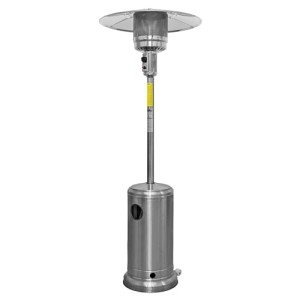Patio Heating Systems: A Comprehensive Guide
As outdoor living areas develop into extensions of our homes, creating a comfy and inviting atmosphere is critical. One of the most reliable methods to attain this comfort is by implementing patio heater. These systems permit friends and families to enjoy their outdoor areas year-round, regardless of the chill of the evening air. This post will explore different patio heating systems readily available, their functions, advantages, and essential factors to consider for picking the ideal one.
Kinds Of Patio Heating Systems
Patio heater can be found in different forms, each with its own special attributes. Below are a few of the most common types:
| Type | Description | Pros | Cons |
|---|---|---|---|
| Electric Patio Heaters | These heaters operate using electricity and be available in wall-mounted, portable, and freestanding models. | Easy to install and utilize; instant heat; safe; low upkeep | Minimal heat variety; might increase electrical energy expense |
| Gas Patio Heaters | Generally powered by propane or natural gas, gas patio heaters provide significant heat output and can cover large areas. | High heat output; can last longer than electric designs; perfect for huge events | Needs gas supply; can be less portable; security concerns with gas leakages |
| Infrared Heaters | Infrared heaters release thermal radiation that straight warms items and individuals rather than the surrounding air. | Efficient; instant heat; very little heat loss; environmentally friendly options offered | Restricted area of result; initial cost might be high |
| Fire Pits | Often made from stone or metal, fire pits offer warmth and ambiance, producing a relaxing environment. | Natural ambiance; versatile (cooking option); collect around for social interactions | Security dangers with open flame; require wood or propane supply |
| Patio Umbrellas with Heaters | These are umbrellas fitted with built-in heating aspects, best for shaded locations. | Convenient; combines shade and heating; portable | Less reliable in windy conditions; limited area; can be pricey |
Secret Features to Consider
When choosing a patio heater, it is important to examine numerous features based on individual preferences, budget plan, and outdoor space requirements. Here are some factors to think about:
- Heating Capacity: Measured in BTUs (British Thermal Units), this identifies the heat output of the heater. Select a heater with sufficient BTUs for your outdoor size.
- Fuel Type: Decide between electric, gas, or wood-burning options based on convenience, accessibility, and efficiency.
- Portability: If mobility is important, try to find lightweight or wheeled designs for simple transport.
- Upkeep: Consider the upkeep required for each type. Electric heaters typically need less upkeep than gas or wood options.
- Security Features: Look for systems with security cut-offs, protective screens, and products that can withstand outdoor conditions.
Advantages of Patio Heating Systems
Patio heater offer several advantages, enabling property owners to take full advantage of using their outdoor living locations. Some benefits include:
- Extended Outdoor Use: Heaters permit more time invested outside, even throughout cooler seasons.
- Increased Comfort: Provide a warm and inviting environment for gatherings, celebrations, or quiet evenings.
- Boosted Aesthetics: Many heater designs add a stylish touch to outdoor decor.
- Increased Property Value: Homes with fully equipped outdoor spaces might attract greater value and interest possible purchasers.
- Versatile Options: With numerous design and styles readily available, there is a heating solution for every single sort of outdoor setting.
FAQs About Patio Heating Systems
1. How much does it cost to operate a patio heater?
- Electric Models: This depends upon the local electrical energy rates and use time. Usually, running an electrical heater can cost between ₤ 0.10 to ₤ 0.50 per hour.
- Gas Models: Propane expenses differ, but a 20-pound tank generally lasts about 8-10 hours, costing around ₤ 20-₤ 30 to fill.
2. Are patio heaters safe to use?
Most modern patio heaters are created with safety functions. Nevertheless, it's vital to follow safety procedures, such as sticking to clearances from flammable objects, using on steady surfaces, and making sure correct ventilation for gas models.
3. Do patio heaters work in windy conditions?
The majority of patio heaters can offer warmth in light winds, however strong gusts can decrease their effectiveness and safety. For Alfresco Heating -wind locations, think about more steady models or use wind shields.
4. Can I utilize a patio heater inside?
Using outdoor heaters inside is not suggested due to carbon monoxide gas threats, particularly with gas heaters. Always validate your heater's designated use guidelines before setup.
5. How do I keep my patio heating system?
Routine upkeep is important to ensure longevity and efficiency:
- For electric heaters, check and clean up the heating component routinely.
- Gas heaters must have their gas lines checked for leaks and filters cleaned.
- Fire pits must be cleaned after use and examined for any residue or ash accumulation.
Patio heating unit play an essential function in changing outdoor areas into comfy and welcoming environments. With a range of options, each with unique benefits and features, property owners can choose the best system based upon their needs, preferences, and particular outdoor conditions. By buying a reliable patio heater, one can optimize enjoyment of their outdoor space throughout the year. Whether hosting summer season barbecues or cozying up on cool evenings, a warmed patio invites togetherness, relaxation, and pleasure, making it a valuable addition to any home.

